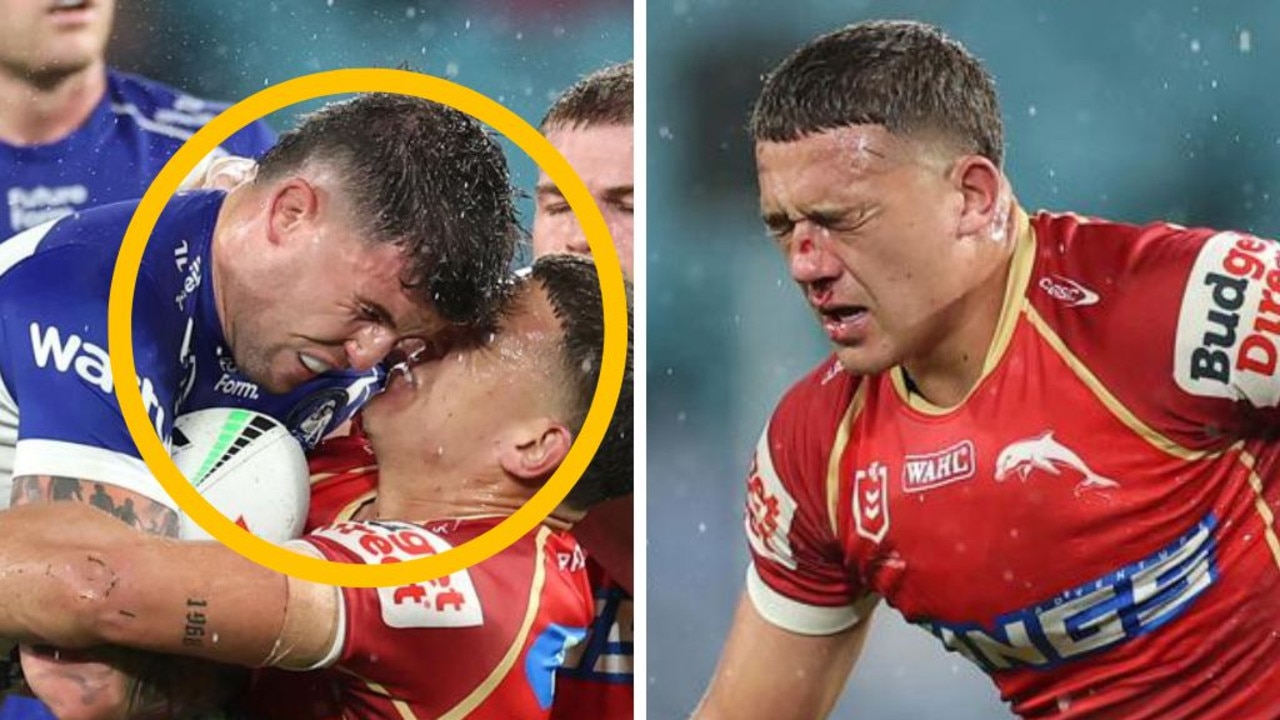RLPA pay dispute with NRL could turn ugly as State of Origin III looms
THE NRL’s top players hijacked the build-up to the State of Origin decider on Tuesday to escalate their pay dispute with the governing body.
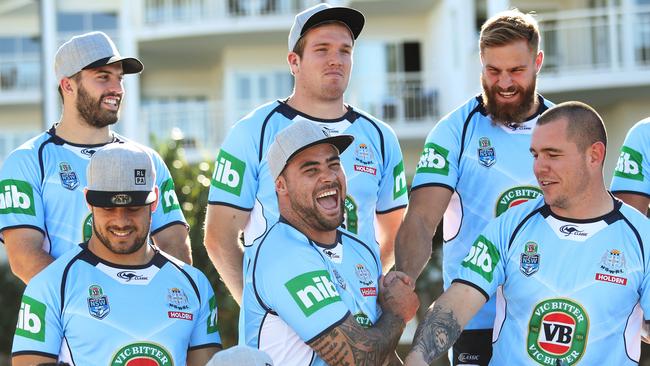
Teams
Don't miss out on the headlines from Teams. Followed categories will be added to My News.
THE NRL’s top players hijacked the build-up to the State of Origin decider on Tuesday to escalate their pay dispute with the governing body.
It came amid allegations players stormed out of a meeting with the NRL earlier in the day in what could potentially mirror cricket’s bitter fallout.
The NRL claimed Jamie Buhrer, Aidan Guerra, Moses Mbye, James Segeyaro and Joel Thompson were among the 10 players who stormed out of a meeting between the Rugby League Players Association and NRL chief operating officer Nick Weeks.
PAY DEAL: Stars at war with the game itself
The NRL wrote to the 16 clubs saying the meeting “ended prematurely when the RLPA left the meeting due to the NRL not agreeing to provide the players with a revenue share model”.
The email also said it was a “a predetermined tactic designed to turn up the heat on the NRL and clubs”.
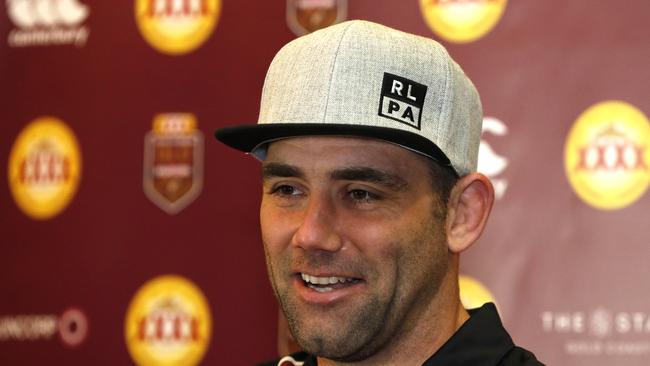
RLPA boss Ian Prendergast has accused the NRL of running a propaganda campaign.
“Players did not stage a walkout at the meeting,” Prendergast said.
“In fact, they discussed the merits of their revised proposal at length and worked through all the items on the agenda.
“Players are disappointed with the ongoing leaking of misleading information that has occurred throughout the process. The public deserve the truth, particularly given the importance of these discussions to the future of rugby league.”
The conjecture stems from the RLPA’s desire to have a fixed revenue share of 29 per cent. The NRL has kept firm on its plans not to commit to a fixed revenue share.
Australian cricket is on the verge of imploding as their players’ association and governing body also wage war — with the main gripe the players desire to maintain a fixed revenue share.
NRL boss Todd Greenberg said he was happy to be part of the negotiations despite being singled out by Australian and Maroons skipper Cameron Smith for missing the meetings.
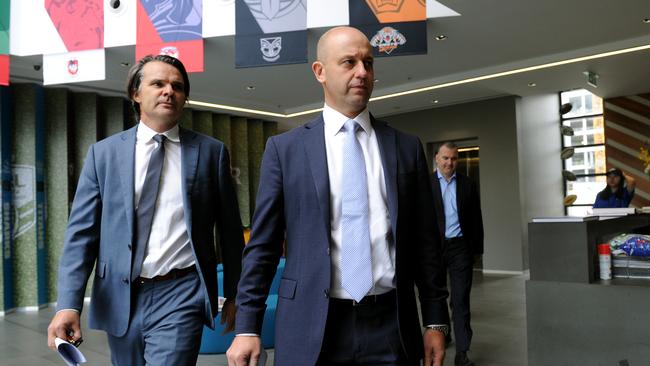
Greenberg said it was his intention to attend the CBA talks when they reached a critical stage. That stage may now come sooner than Greenberg had anticipated.
“These negotiations will take several months so it makes sense for them to be led by our chief operating officer Nick Weeks,” Greenberg said. “Nick has already put a revised offer on the table which will see players get a 48 per cent rise in payments over the next five years.
“But I have made it clear I am happy to attend any meeting when needed and that offer remains open.”
Origin foes NSW and Queensland sported RLPA caps at media opportunities on either side of the border.
This came as Blues playmaker James Maloney warned of future disruptions after declaring the hats were a show of unity.
“A couple of lock-ins last week didn’t get the result we were quite looking for,” Maloney said of recent meetings.
“It’s starting to build and the boys are looking to take action and take steps to put some pressure on the NRL to come around and see what we’re proposing is in the best interests of the game.
“The RLPA has been walked over for so long. You sit in all the meetings and they’re not even there to negotiate, they’re just there to give you lip service and tell you what you can and can’t do.
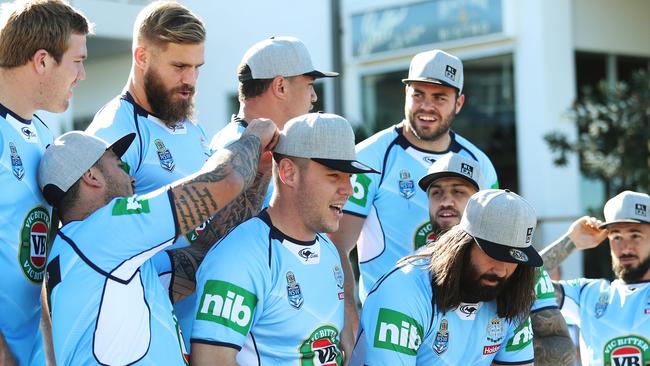
“As a playing group everyone is over it. We know that our proposal is the best way forward for the game and for the players.
“So the boys aren’t going to budge on what we deserve.
“It doesn’t have to be dramatic (action), but I think there’ll start to be some things that happen which will show just how united the playing group is and how solid we are behind the RLPA.”
The RLPA has maintained its desire for a 29 per cent share of the game’s revenue but has backed away from including a number of items in the revenue share figures, including leagues club revenue, contra deals plus costing surrounding the NRL’s digital strategy.
“We have requested that the NRL take the players’ revised offer back to clubs for their consideration, which we believe is fair and affordable,” Prendergast said. “It also includes significant concessions that players have agreed to make during these negotiations.
The Daily Telegraph’s David Riccio, Dean Ritchie and Fatima Kdouh take you inside Camp Blues including the latest on the Tyson Frizell injury.
You can also subscribe to League Central via the iTunes store
“Considering the game has grown off the back of the players’ performance and them putting their bodies on the line week-in, week out, we believe they deserve a fair deal. This will also allow the NRL record levels of revenue to invest in other areas of the game. The RLPA remains committed to meeting at any time to work through the issues that need to be resolved.”
In a note to clubs the NRL confirmed it would offer a 46.8 per cent increase in the top 30 salary cap and allowances in 2018-22.
The NRL is offering 28.5 per cent of whole of game income.
The RLPA says that offer is more like 26 per cent while AFL players recently received 28 per cent of whole of game revenue.
While the NRL said about 81 per cent of NRL and club revenue is spent on elite players.
Here is the NRL’s letter to all 16 clubs:
Dear all, as you might be aware by now, today’s scheduled meeting with the RLPA ended prematurely when the RLPA left the meeting due to the NRL not agreeing to provide the players with a revenue share model. In our view, this was a predetermined tactic designed to turn up the heat on the NRL and Clubs.
In that context, it’s vital that the facts of the NRL offer to players in this CBA negotiation is understood by the Game’s stakeholders. Accordingly, I have set out below a number of facts that accurately describe both the financial offer being made to NRL players for the 2018-22 CBA period and the context of that offer. Please feel free to communicate these facts to your respective staff and other stakeholders.
The NRL’s offer involves:
1) Term on Term Player Pay Increases
46.8% increase in the Top 30 Salary Cap and allowances (i.e., Top 30 cap & 300k cash VPA & 100k MVA) in 2018-22 v 2013-17 (5 years). This is effectively players’ take-home pay.
43% increase in Top 30 Salary Cap and allowances (taking into account Top 25 v Top 30 increase in min contracted players) in 2018-22 v 2013-17.
33% increase in NRL direct player payments in 2018-22 v 2013-17 (including 50% guaranteed increase in W & E, 28% increase in rep payments, 122% increase in player insurance costs and 87% increase in RLPA funding).
The new AFL CBA deal offers AFL players a 30% increase (in 6 years) in their take home pay cycle on cycle.
2) Year on Year Player Pay Increases
31.4% increase in Top 30 Salary Cap and allowances in 2018 v 2017 (26.4% taking into account Top 25 v Top 30 increase in min contracted players).
The new AFL CBA deal offers AFL players a 20% increase in their take home pay in 2018 v 2017.
3) Total Player Payment Offer and Components
The NRL is offering player payments and benefits equivalent to 28.5% of Whole of Game Income, namely:
24% salary cap
2.6% NRL additional payments and benefits to players (e.g., rep payments, retirement payments, player insurance, etc.)
1.8% Club additional payments and benefits to players (e.g., match payments, tickets, health insurance, etc.).
The new AFL deal provided players with 28% of its Whole of Game Revenue.
Cricket Australia is currently offering an effective 7.58% fixed pay increase from 2018/19 — 2022/23 (5 years), equal to 1.5% increases pa.
Ave AFL listed player salary (excluding rookies) under its new CBA deal is $370k. Ave NRL salary of Top 30 will be 320k, or close to 87% of the average top tier AFL salary. However, NRL and NRL Club revenues are only approximately 56% of AFL and AFL Club revenues (2016 figures).
Min Top 30 NRL player wage is 100k in 2018.
4) NRL Expenditure and Club Finances
Approx. 81% of NRL and Club revenue is spent on Elite players.
NRL Club Player Contracts guaranteed by NRL = 100%.
Where will the NRL revenues go in 2018-22?
52% players and clubs (with over 2/3 of that going direct to players)
19% grassroots
4% community and welfare (with more than 50% of that to be spent on NRL players)
3% Operations and NRL admin (which includes the NRL’s costs of player insurances — such as Career Ending Insurance, Rep footy insurance and Life/TPD insurance)
6% football, integrity & salary cap audit
16% events, game and sponsorship — the costs of generating revenue (which includes NRL player costs such as representative payments, player prizemoney and player ticketing
Originally published as RLPA pay dispute with NRL could turn ugly as State of Origin III looms

